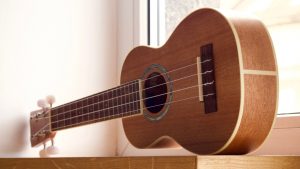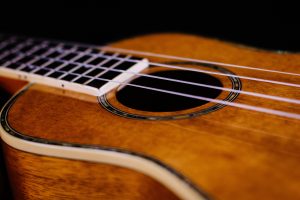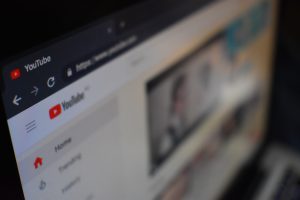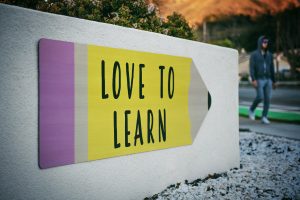Toda y our class learned a little bit about coding and how it can be used in the classroom. I have heard so much about coding both in my work as an EA, as well as from my own children who have done it in their own school. I have never really understood what exactly coding is, however, and it always has felt like a daunting complicated skill to me. Through the videos we watched prior to today’s class I found that it began to make a little more sense. Having coding explained as breaking a problem down into different components to solve made more sense to me. I tried the coding with Anna and Else program today and honestly found it a little tricky. Though I understand a little more about what coding is and how it might be useful in the classroom especially given how technology is such an ever expanding area, I still can wrap my brain around how it works. I think if I had had more time today to work in the coding practice program I may have been able to figure it out, but once it started asking me to code multiple lines I was lost. From my experience though, children seem to really love coding, and I do see how it is a skill that can help in many areas of learning, so I would like to expand my own learning as well.
y our class learned a little bit about coding and how it can be used in the classroom. I have heard so much about coding both in my work as an EA, as well as from my own children who have done it in their own school. I have never really understood what exactly coding is, however, and it always has felt like a daunting complicated skill to me. Through the videos we watched prior to today’s class I found that it began to make a little more sense. Having coding explained as breaking a problem down into different components to solve made more sense to me. I tried the coding with Anna and Else program today and honestly found it a little tricky. Though I understand a little more about what coding is and how it might be useful in the classroom especially given how technology is such an ever expanding area, I still can wrap my brain around how it works. I think if I had had more time today to work in the coding practice program I may have been able to figure it out, but once it started asking me to code multiple lines I was lost. From my experience though, children seem to really love coding, and I do see how it is a skill that can help in many areas of learning, so I would like to expand my own learning as well.
I can’t believe we are already at the end of the term! The last couple weeks have been very up and down, with a lot of changes. It has impacted my musical growth plan a little bit in that practice time has been sporadic with all the changes in schedules and routines. I have been able to reach my goal for my songs however, for the most part. Below is the link to my video playing “I’m Yours” by Jason Mraz. I am mostly happy with where I got to in my learning, though I could get a little smoother in the chord transitions, and I still slow down a bit in the middle of the song as I find it tricky to sing and strum the bridge part. I reached where I wanted to be by the end of this project, but I do wish I was able to do it a little more confidently. I hadn’t anticipated how tricky it would be to put the strumming, chord transitions, and singing together, and I think that is what I have had the most difficulty with throughout this assignment. I would get to where I could do each part well on its own, but putting them together was another thing and it took more time than I expected.
I have really enjoyed learning how to play the ukulele and would love to continue on with it. I think it would be a wonderful skill to be able to bring into the classroom both in a music teacher role as well as in the everyday classroom. I can see how ukulele could be incorporated into the classroom especially in primary grades. A goal I have is to learn a few songs that would be appropriate and fun for the younger grades, and try and bring these songs into my future classroom. Though I feel far from being comfortable playing in front of a class at this point, I think if I kept practicing, learning, and growing in confidence, I would one day be able to. So while this marks the end of my musical growth assignment, it is actually far from over!
W ell it has been a very interesting week with classes moving on line due to the covid-19 crisis. With all the changes of classwork, having my own kids home with me it has been another challenging week getting practice time on the ukulele in. I’ve made a little bit of progress however being able to strum without using the song playing at the same time as a guide. I find this actually helps a bit as I can slow down the tempo to what is comfortable for me rather than struggling to keep up with the song on the YouTube video. Though I am still a little shaky playing the quicker middle section, it is getting a little easier. For this final week I just need to finish memorizing the lyrics and put all the pieces together to play and sing at the same time! I can’t believe the end of term is so close now, it sure has flown by!
ell it has been a very interesting week with classes moving on line due to the covid-19 crisis. With all the changes of classwork, having my own kids home with me it has been another challenging week getting practice time on the ukulele in. I’ve made a little bit of progress however being able to strum without using the song playing at the same time as a guide. I find this actually helps a bit as I can slow down the tempo to what is comfortable for me rather than struggling to keep up with the song on the YouTube video. Though I am still a little shaky playing the quicker middle section, it is getting a little easier. For this final week I just need to finish memorizing the lyrics and put all the pieces together to play and sing at the same time! I can’t believe the end of term is so close now, it sure has flown by!
 Well this has been an interesting week to say the least. With the ever evolving covid-19 crisis taking place around the world right now, UVic shifted from face to face classes to online instruction this week. So for our Tech class, our entire cohort participated in the lesson through a Zoom call. This was my first time using Zoom, and though I was skeptical at first about how 32 students and an instructor could all be on one video call, it actually worked really well! It was very easy to join the call as Rich had emailed everyone a link. A couple features that I liked about the Zoom program were that you could change how you viewed everyone on the call. When I first joined the call, whoever was speaking would show up on the main part of the screen, and then 3 or 4 other people would show along the side in a smaller frame. Everyone else would be out of view and only connected through audio. However, there was an option you could click on that showed everyone who was on the call in thumbnail size frames so that you could see everyone all at once. This was nice as it connected everyone together more, and you could see peoples expressions and participate in conversations a little better. We were doing group presentations as well, and so having the feature where everyone could be muted except those presenting was a good to have as it prevented hearing a lot of background noise and interruptions. The presenting group could also split their screen so that everyone could see their PowerPoint slides as well and follow along with the presentation. I really liked that feature (even though I couldn’t quite get mine to work properly) because originally I thought we would just have to talk about our topic to the group without being able to show the slides because I didn’t understand how we would be able to through a video call.
Well this has been an interesting week to say the least. With the ever evolving covid-19 crisis taking place around the world right now, UVic shifted from face to face classes to online instruction this week. So for our Tech class, our entire cohort participated in the lesson through a Zoom call. This was my first time using Zoom, and though I was skeptical at first about how 32 students and an instructor could all be on one video call, it actually worked really well! It was very easy to join the call as Rich had emailed everyone a link. A couple features that I liked about the Zoom program were that you could change how you viewed everyone on the call. When I first joined the call, whoever was speaking would show up on the main part of the screen, and then 3 or 4 other people would show along the side in a smaller frame. Everyone else would be out of view and only connected through audio. However, there was an option you could click on that showed everyone who was on the call in thumbnail size frames so that you could see everyone all at once. This was nice as it connected everyone together more, and you could see peoples expressions and participate in conversations a little better. We were doing group presentations as well, and so having the feature where everyone could be muted except those presenting was a good to have as it prevented hearing a lot of background noise and interruptions. The presenting group could also split their screen so that everyone could see their PowerPoint slides as well and follow along with the presentation. I really liked that feature (even though I couldn’t quite get mine to work properly) because originally I thought we would just have to talk about our topic to the group without being able to show the slides because I didn’t understand how we would be able to through a video call.
So all in all I think Zoom is a great tool to use when making a video call. I was apprehensive about using it at first but found it very user friendly. The only difficulty I found was when I tried to split my screen to show my slide presentation I couldn’t get the presentation view to work. On my screen it looked like it was working but on the rest of the groups screens they were just seeing the slides in edit view. Other than that I thought everything worked smoothly, and I enjoyed using it. One thing I would be curious about learning however, is what the process is to set up a call. We didn’t get to experience that part of the program as our teacher had everything set up so I’m not sure what that entails.

Photo by Glenn Carstens-Peters on Unsplash
Well it is time to conclude our group inquiry into short cut tools that are used in the classroom. We will discuss the tools we researched about, why we were interested in this project, and the pro and cons of using these tools.
The short cut tools we looked at are:
- Spell check: function that indicates which words have been misspelled in a document.
- Talk to Text: tool that takes audio content and transcribes it into written words.
- Text to talk: assistive technology that takes digital text and reads it aloud.
Why we were interested in this topic:
- We wanted to learn how to prevent student dependency on technology shortcuts.
- Does the use of spell check and auto correct prevent the students from learning valuable grammar skills?
- We wanted to know if students reach a competent level of literacy and grammar skills, will they diminish with the increased use of shortcut tools?
Pros to using these tools in the classroom:
- Can help students with learning disabilities.
- Students can focus on getting ideas down without worrying about editing.
- Can help students with poor or limited motor skills.
- Can assist students with vision impairments.
- Are a good tools to help students who are learning English as a second language.
Cons to using these tools in the classroom:
- Takes away from the students’ learning.
- Students stop thinking about the little details of their grammar and spelling.
- Students begin to rely on these shortcut tools.
- If students don’t know how to spell a word or make a certain grammatical correction, when given a list of possible correct options, they won’t know which one to choose.
We felt this was a very powerful and relative quote: “Technology can amplify great teaching, but technology cannot replace poor teaching,” (Glowacki, 2015).
This was an interesting topic to explore, and is definitely something to keep in mind in the future. For  myself, I agree with the research we found stating the importance of ensuring students have solidly learned the necessary grammar and spelling skills before introducing these kinds of shortcut tools. I think in elementary grades there is no need to be using these tools at all, as convenient as they are. For older students in middle school, I think they can begin to use use these tools but only secondary to using their knowledge and skills. For tools like text to talk and talk to text, I think they are a great support tool for students who may have a learning disability or other impairment that makes it difficult for them to read or write. These tools in particular help make learning accessible to all students.
myself, I agree with the research we found stating the importance of ensuring students have solidly learned the necessary grammar and spelling skills before introducing these kinds of shortcut tools. I think in elementary grades there is no need to be using these tools at all, as convenient as they are. For older students in middle school, I think they can begin to use use these tools but only secondary to using their knowledge and skills. For tools like text to talk and talk to text, I think they are a great support tool for students who may have a learning disability or other impairment that makes it difficult for them to read or write. These tools in particular help make learning accessible to all students.
I hope you enjoyed following our inquiry journey!
Jambo again! Unfortunately this inquiry project has come to a disappointing end. Due to the covid-19 virus and its impact around the world, my international practicum in Tanzania has been cancelled. Though I understand the decision made by UVic, it is still heartbreaking to know that I will not have this experience. However, I have really enjoyed learning some Swahili words and phrases, as well as some of the history of the language. Here is a quick summary of the biggest things I learned through this process:
- Swahili originated from a mix of local Bantu languages and Arabic
- It is a fairly easy language to learn as it is mostly spoken as it reads
- Hello!Jambo is a helpful app to learn some of the basic words and phrases, but it is very limited if you are looking to go beyond the basics
- There are about 15 Swahili dialects, but kiUnguja is the most common
- Creating a travel booklet for some of the most helpful words and phrases is a good idea. It is difficult to have all of the words and phrases memorized, so having a little notebook handy that you can refer to would be helpful.
Though I am incredibly sad that I won’t get to use the Swahili I have learned right now, I am staying hopeful and determined that I will get the chance to use it down the road. Maybe an opportunity will arise for next years’ practicum, or maybe it is a goal I will have to set and work towards to travel to Africa on my own when I am done school. Either way, if you have the opportunity to learn a bit of another language, take it! Swahili has been fun to learn, and I plan to keep up on the words I now know, so that they will still be in my memory down the road when I need them. Once again, Kwaheri for now.

Photo by Samuel Ramos on Unsplash
This last couple weeks have been very busy and finding time to practice the ukulele has been a challenge. That being said however, things are slowly coming along in learning my second song. I am still finding the middle section of the song tricky when there are only four beats between chord changes rather than eight. Also, putting the strumming and singing together for this song (“I’m Yours”) is even hard than in You Are my Sunshine. The tune is not consistent and the words don’t always match with the strums. I am feeling a little nervous about whether I will be able to learn “I’m Yours” as well as I want to. My focus for this week will be to work on the middle section of the song and be able transition between chords smoothly. I also want to have the lyrics memorized so that I can practice putting the strumming and lyrics together.
In this weeks tech class we started with a recap about the visit to George Jay elementary to learn more about inquiry learning in primary grades. Hearing my peers’ takeaways from that experience, and discussing inquiry a little further, just once again reminded me how important it is incorporate this approach into the classroom and it is definitely something I want to learn more about and bring it into my practice.
weeks tech class we started with a recap about the visit to George Jay elementary to learn more about inquiry learning in primary grades. Hearing my peers’ takeaways from that experience, and discussing inquiry a little further, just once again reminded me how important it is incorporate this approach into the classroom and it is definitely something I want to learn more about and bring it into my practice.
We then talked about multimedia learning and the pros and cons of using different medias as teaching platforms. The ones we specifically talked about were TeacherTube, YouTube, and Khan Academy. I have never heard of TeacherTube before, but I would be interested in looking into it to see whether I think it would be something I would use in the class one day. For YouTube, I do think there are times that it can be helpful as a learning tool, but I would be very cautious to use it in the classroom. I think so many kids these days love to watch YouTube and are very versed at how to use it. I feel like it could quickly become a distraction for students as it is so easy to veer away from the intended activity to another video of interest for the student. When I have worked as an EA in different classrooms where the teacher has allowed children to use YouTube, I have found that it causes more problems and behaviors than it is helpful. I have also seen it used as a time filler where students aren’t actually watching videos for educational purposes, and I think it is totally unnecessary. If I was to use YouTube in my future classroom it would be for a specific purpose that would be guided by me, and only once and a while. A tool that I see myself using in the classroom if I am teaching intermediate or middle school would be Khan Academy. I think it is a great resource, though it would really only be beneficial for older students. But for anyone that needs a little more explanation about a particular topic, I think Khan Academy can be helpful. These videos do tend to teach to once style of learning however, so if the format of the videos and explanations don’t fit a students learning style then it may not be as effective.
 For this week’s blog, we have decided to discuss and research the cons to have technology shortcuts in the classroom. During our group discussion…
For this week’s blog, we have decided to discuss and research the cons to have technology shortcuts in the classroom. During our group discussion…
- takes away from the students’ learning
- students stop thinking about the little details of their grammar and spelling
- students rely on these shortcuts
- if you don’t know it, when there is a list of possible correct options given, you don’t know which one to choose.
Following our group discussion, we researched a couple of articles and found the following quotes:
- “In using e-mail or word-processing software, we become less proficient proofreaders when we know that a spell-checker is at work” (Nordquist, 2019).
- “Typically, if you have misspelled a word the spellchecker will offer a list of alternatives. Unless your initial attempt is reasonably close to the correct spelling, you are unlikely to be offered sensible alternatives, and, even if you are, you have to be able to make sense of what is on offer” (Nordquist, 2019).
- “By middle school and high school, students start saying things like “I don’t have to spend time on this because I can ask Siri,” Gardner said. “I’m even guilty of it. I use Grammarly. … We’re less likely to self-monitor our spelling because we know the computer will do it for us” (Denn, 2019).
Based on our findings from these articles, we have found that there is good reason to be cautious about the amount these tools are used in the classroom. There are those students who need the support of these tools, however, it’s still important for them to learn basic literacy skills. In younger grades, there is no need to utilizing these tools because this is the time when students should really be learning these skills. As students get older, and have a strong understanding of grammar, spelling, and reading, then they can begin to use short-cut tools to enhance their writing, however, it is important that they do not come to rely on these tools.
Articles we used in this blog:

Photo by Dragos Gontariu on Unsplash
This last week our class went to visit George Jay Elementary school and talk with Rebecca Bathurst-Hunt, a kindergarten teacher there. The focus of this visit was to learn more about inquiry learning in primary grades. I found it interesting to hear Rebecca talk about how she incorporates inquiry into her kindergarten class as what we have learned about inquiry so far seems to pertain more to older grades. I liked how she explained that a good place to start is to simply begin a lesson or unit with a question, rather than just stating to the students what they will be learning about. This automatically sparks the students’ curiosity and gets them thinking about different possibilities for learning. This is a great base level for beginning to guide students to learn about inquiry without overwhelming them. My biggest concern about doing inquiry with younger grades has been wondering how they would know how to actually navigate an inquiry and know what kinds of questions to ask and what direction they need to go to complete their project. Rebecca explained how she scaffolds inquiry by starting with a more structured project at the beginning of the year where the whole class inquires about one question, and she guides the process. Then she slowly begins to give the students opportunity to take more control over their learning through different projects over the year until they are ready to do their own inquiry. I love how she had little areas throughout the classroom with different set ups that connected with their inquiry to engage students with further learning based on their curiosity and promote provocatios. I also like how she really stressed honoring the students learning by providing opportunities to showcase it.
 Another thing that stood out for me was how she talked about her “teacher heart.” This is where she hold her values as a teacher and decides what she feels is most important for learning. As she said, whenever she is approached with new buzz words, programs, technology etc, she first reflects on whether it aligns with her teacher heart before she decides if she will use it or not. She encouraged us all to decide what our teacher heart is, and \i think it is a great way to make sure you hold to your values as an educator.
Another thing that stood out for me was how she talked about her “teacher heart.” This is where she hold her values as a teacher and decides what she feels is most important for learning. As she said, whenever she is approached with new buzz words, programs, technology etc, she first reflects on whether it aligns with her teacher heart before she decides if she will use it or not. She encouraged us all to decide what our teacher heart is, and \i think it is a great way to make sure you hold to your values as an educator.
Recent Comments